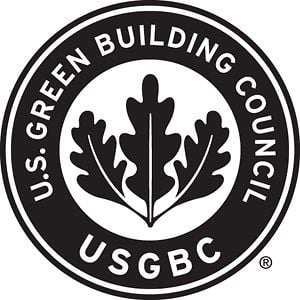
Though Richard Donovan and his organization are not toolmakers, they’re committed to ensuring the on-going availability of the one thing every woodworker needs: wood, in all its exotic and beautiful varieties. As the chief of forestry and director at the SmartWood organization, he’s trying to ensure that the wood you buy — cherry wood from Wisconsin or cocobolo from Costa Rica — was harvested from a sustainable forest.
The idea for certification rose up from what Richard describes as a few pioneers in both the public and private forestry sectors who lead the way.
“They thought they were doing a damn good job of forest management and they wanted the public to know,” Richard recalled. “They decided an independent stamp of approval would be good for the marketplace.”
SmartWood certifies both forests themselves and lumber operations, assuring that they’ve been through the checks that guarantee ecologically sound practices. Chain of custody certifications are for companies that process, manufacture or sell products made from certified wood & like big lumber wholesalers. Forest management certifications indicate that lumber has been harvested in an ecologically sound manner, from a responsibly managed forest, in a way that is socially and economically beneficial to local communities.
The demand for certified wood, Richard noted, varies widely throughout the world. Right now, the European market is the strongest for SmartWood.
“They’re pretty green over there.” Richard explained, “The recognition of the concept is up above 50 percent of the consumer population, which is pretty striking, compared to where we are here in the States.”
It’s not just consumer pressure behind the high level of certification in Europe. As Richard clarified, “Your public sector operations, people who manage public forests want to demonstrate to their constituency that they are doing a good job, and perhaps more importantly, prove that their practices are doing what they promised.”
There’s a similar situation with certification in Canada, Richard explained, particularly in the Western provinces where forests are located on public lands. Like their European counterparts, Canadian forest managers want to demonstrate to the public that they’re managing to a high standard. Large buyers of lumber and paper in Canada also like to be able to say that they’re purchasing certified wood.
“The public acceptance of certification is more like in Europe,” Richard observed, “and forest managers don’t look at you cross-eyed when you talk about it.”
The U.S. market, Richard admits, is more challenging, “SmartWood’s regional managers have been calling on wholesalers and retailers of wood products, as well as forest managers and owners, for about 10 years, but there are some hurdles to overcome. The main one is profitability.”
“Companies might initially pursue certification because to be altruistic and want to show people that they do good forest management,” Richard noted, “But if the marketplace doesn’t pay them back for it, they’re not going to continue. They have to pay us to get audited year after year, and sooner or later they start asking why they’re paying for something if it doesn’t make them money?”
It’s the indirect costs that substantially raise the price of sustainable wood, Richard explained. “If you’re going to cut wood and not worry about it, and just go out there with a bulldozer and get every tree you can, obviously your costs in the short term are going to be lower than somebody who’s doing it carefully.”
Some groups, however, do “get it,” according to Richard. As an example, he cites the LEED program, which is architect driven and award points for large institutional builders.
“And using FSC SmartWood certified raw materials,” Richard noted, “earns them a point!”
Home Depot is also now stocking certified wood. As the largest purchaser of wood and forest products in the world, “they feel, shall we say, somewhat sensitive on the issue,” Richard says.
Consumers can pressure retailers to stock SmartWood certified products — which is more important than the retailer itself being certified — Richard says, but it can become a chicken and egg situation.
“If the pro shop at Home Depot decides to not stock certified wood, then customers don’t necessarily see it as important,” he observed, adding, “and if their customers don’t ask for it, pro shops don’t necessarily stock it.”
Richard thinks it’s important at this juncture for consumers to look for the FSC logo on boards, to send producers the message that they have to do good forest management. He described the problems with exotic hardwoods as particularly acute, because they tend not to propagate in the forest, and buying them in significant volumes likely to contribute to some poor forestry. On the other hand, it can be these exotics that lead the way to certification for an entire forest.
“For a long time there were tons of incentives in the system for lousy managements. Now with globalization, whether you’re harvesting lumber in Malaysia or in Vermont,” Richard noted, “it’s the highest quality, biggest and best-marketed trees that drive the management practices for the entire forest. If mahogany buyers are demanding that their purchases be from a certified forest, all the other species in the forest will benefit & even if the buyers of those other species don’t care about certification.”
“Everybody complains the selection of wood they get today isn’t as good as the wood they got yesterday,” Richard noted. “And if woodworkers want to be able to choose the quality wood they use, no matter how good our genetics, we’re going to need a large sustainable supply. And the only way you’re going to get that is good long-term management and that’s what certification is all about.”





